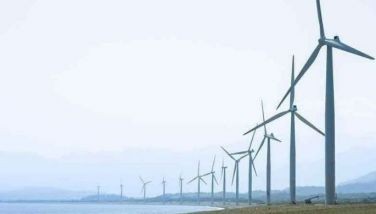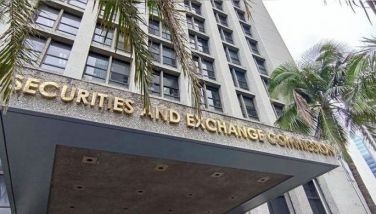Group warns vs substandard construction materials

December 14, 2006 | 12:00am
The Philippine Product Safety and Quality Foundation Inc. (PPSQF) has issued a warning against substandard construction materials following recent disasters such as typhoons Reming and Milenyo, as well as low-intensity earthquakes in various parts of the country.
The spate of disasters, the PPSQF warned, highlights the need for vigilance in monitoring the market for low quality products that may cause the loss of lives and property.
The PPSQF is beefing up its campaign against substandard products. One construction material that the PPSQF is monitoring is imported cement product from China.
According to PPSQF executive director Ma. Victoria C. Padilla, cement is only one of several building and construction products monitored by the PPSQF to safeguard the interests of consumers.
Padilla said that imported cement that came in through Davao last June failed quality tests simultaneously conducted by a Department of Trade and Industry-accredited testing center and a private laboratory.
The tests showed that buildings, bridges and houses built using the imported Chinese cement may collapse as the Chinese-made cement failed three vital parameters involved in measuring the quality of cement.
The three tests are the seven-day compressive strength, autoclave expansion, and the insoluble residue test,
Cement products that fail these mandatory tests, Padilla said, are considered to be substandard and are not allowed to be sold in the market because they put consumers at great jeopardy.
Low quality construction materials could lead to serious structural failure due to its poor performance.
Thus, Padilla warned, consumers patronizing these products are risking life, limb and property.
Compressive strength refers to cement’s resistance to applied pressure.
Since cement is used to bind other construction materials such as gravel, sand and steel together, it must have sufficient strength to become sturdy.
If cement fails in the test for compressive strength, this means that its binding force is below the required minimum strength limit.
A structure built using cement that has failed the compressive strength test is unsafe and susceptible to collapse in the event of an earthquake.
Using substandard cement, Padilla warned, is dangerous especially for multilevel or high-rise structures because the substandard cement would result in concrete that is unable to support heavy weight or the load of the added structure.
Autoclave expansion, on the other hand, refers to the expansion of a concrete structure and is manifested in the form of cracks.
One of the main causes of cracking in a concrete structure is the unsoundness of cement that was used during construction.
Cement that has not met the autoclave expansion test poses a grave danger to lives and property because it can ultimately result in grave structural failure,
Padilla cited the case of Ruby Tower which newspaper accounts said collapsed during an Intensity 7 earthquake in 1968,killing more than 300 tenants.
The collapse, Padilla said, may have been prevented had good quality construction materials been used. Ruby Tower was just seven storeys high.
At that time, Padilla said, it was considered a tall building.
"Can you imagine if a 20 to 30-storey building was constructed using substandard construction materials?" Padilla asked.
She urged consumers not to wait for accidents to happen because unsafe and substandard construction materials were used.
The PPSQF, which is a consumer advocacy group, also urged local government officials not to allow the use of substandard construction materials.
The spate of disasters, the PPSQF warned, highlights the need for vigilance in monitoring the market for low quality products that may cause the loss of lives and property.
The PPSQF is beefing up its campaign against substandard products. One construction material that the PPSQF is monitoring is imported cement product from China.
According to PPSQF executive director Ma. Victoria C. Padilla, cement is only one of several building and construction products monitored by the PPSQF to safeguard the interests of consumers.
Padilla said that imported cement that came in through Davao last June failed quality tests simultaneously conducted by a Department of Trade and Industry-accredited testing center and a private laboratory.
The tests showed that buildings, bridges and houses built using the imported Chinese cement may collapse as the Chinese-made cement failed three vital parameters involved in measuring the quality of cement.
The three tests are the seven-day compressive strength, autoclave expansion, and the insoluble residue test,
Cement products that fail these mandatory tests, Padilla said, are considered to be substandard and are not allowed to be sold in the market because they put consumers at great jeopardy.
Low quality construction materials could lead to serious structural failure due to its poor performance.
Thus, Padilla warned, consumers patronizing these products are risking life, limb and property.
Compressive strength refers to cement’s resistance to applied pressure.
Since cement is used to bind other construction materials such as gravel, sand and steel together, it must have sufficient strength to become sturdy.
If cement fails in the test for compressive strength, this means that its binding force is below the required minimum strength limit.
A structure built using cement that has failed the compressive strength test is unsafe and susceptible to collapse in the event of an earthquake.
Using substandard cement, Padilla warned, is dangerous especially for multilevel or high-rise structures because the substandard cement would result in concrete that is unable to support heavy weight or the load of the added structure.
Autoclave expansion, on the other hand, refers to the expansion of a concrete structure and is manifested in the form of cracks.
One of the main causes of cracking in a concrete structure is the unsoundness of cement that was used during construction.
Cement that has not met the autoclave expansion test poses a grave danger to lives and property because it can ultimately result in grave structural failure,
Padilla cited the case of Ruby Tower which newspaper accounts said collapsed during an Intensity 7 earthquake in 1968,killing more than 300 tenants.
The collapse, Padilla said, may have been prevented had good quality construction materials been used. Ruby Tower was just seven storeys high.
At that time, Padilla said, it was considered a tall building.
"Can you imagine if a 20 to 30-storey building was constructed using substandard construction materials?" Padilla asked.
She urged consumers not to wait for accidents to happen because unsafe and substandard construction materials were used.
The PPSQF, which is a consumer advocacy group, also urged local government officials not to allow the use of substandard construction materials.
BrandSpace Articles
<
>
- Latest
- Trending
Trending
Latest
Trending
Latest
Recommended



























